The nature of sound - physics explained
After vibration and harmonic motion and after the nature of waves, the time has finally come for... drumm roll please... SOUND! Are you excited about it as I am? Thank you for waiting patiently and going through posts related to it. Now you have a solid background and we can talk about all those lovely things related and made of sound. Before we start, here is the list of previously published posts in my physics explained series:
VIBRATION
DOPPLER EFFECT
COLD BOILING WATER
THE NATURE OF WAVES
HOW DO WE SEE COLORS
LEARN ABOUT RAINBOWS
EVERYTHING IS MAGNETIC!
NEWTON'S LAWS OF MOTION
THE WAVE--PARTICLE DUALITY OF PHOTONS
DIFFERENCE BETWEEN HEAT AND TEMPERATURE
CALCULATE THE SPEED OF LIGHT USING CHOCOLATE
I was always obsessed with sound. I have a perfect hearing but am unable to sing or play an instrument. It is a curse, really. My body is just not made for creating music. My fingers are too small and chubby for keyboards and strings and my lung capacity is not good enough for wind instruments. As for my voice, well, let's just say you do not want to hear my voice. The only thing left for me to do is listen and appreciate the sound, enjoying when others produce it. I occasionally play with my little drum and annoy people but that is about it. But hey! I can explain sound and know almost everything about it from the standpoint of physics. That counts for something, right?
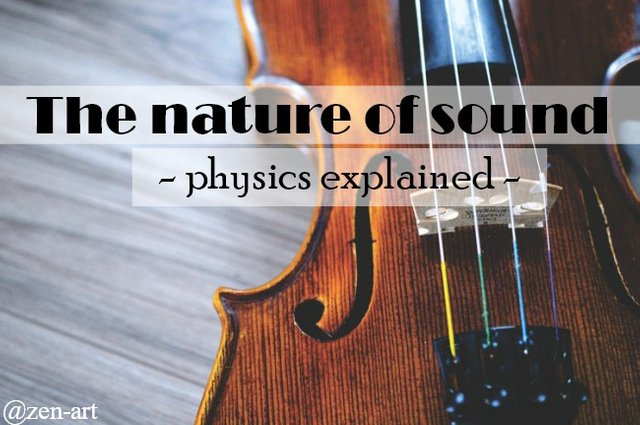
CC0 licence, Unsplash, author: Providence Doucet, adapted by me


Sound is all of those 3 things. It is a mechanical wave, longitudinal and a pressure wave. When we were talking about waves in one of my previous posts, we said that a wave is a disturbance that travels through a medium that transports energy from one point to another. The medium is a series of interconnected and interacting particles and because the propagation of sound needs particle-to-particle interaction, it is defined as a mechanical wave.
The propagation of sound needs particle-to-particle interaction,
ergo, it is a mechanical wave.
The most common and easiest way to show the creation of sound waves as mechanical ones is by the use of a tuning fork. It is a metal object that has two tines which can vibrate. When we struck the tuning fork with something (do not use your head, use anything else, almost anything, use something that will not break), those tines will vibrate back and forth and disrupt the air molecules and the disturbance will be passed to adjacent air molecules for particles are interacting. Do you remember what the main point of mechanical waves is? Unlike electromagnetic waves, mechanical waves can not travel through a vacuum.
REMEMBER!
Sound does not travel through a vacuum.
We learned everything about transversal waves and I told you that I will explain longitudinal when we get to sound so here it is. Unlike transversal ones where the wave is traveling perpendicular to the direction of vibrating particles, longitudinal waves are traveling in the same direction the particles are vibrating. Those two directions are parallel. Remeber a slinky? This time, you will not move one end of it up and down to create waves, now you will move it forward and backward to create a longitudinal wave.
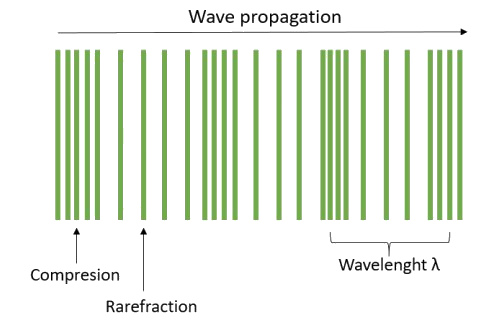
Image A. LONGITUDINAL WAVE, author: @zen-art
What exactly happens? A similar thing happens with a vibrating string as it does with the slinky. When a vibrating string moves forward (imagine you are plucking a string on a guitar), it pushes the air molecules forward and those molecules come closer to their neighbors and we have compresion areas where the particles are closer together. When the vibrating string moves backward, it lowers the pressure of the air in front of itself so the particles of air just next to the string move backward too. Those particles that are in that area of lower pressure move forward to expand into a large region of space and we have areas of rarefraction where the particles are far apart.
Because of particle-to-particle interaction,
surrounding particles begin to move back and forth and
the wave is on its way.
The easiest way to picture this is with a balloon or blowing a bubble. When you breathe out, you are moving the air particles forward, and when you breathe in, you are moving them backward. This corresponds to the string moving the air but on a much smaller scale. Keep in mind that blowing bubbles has nothing to do with sound waves. This example is given only to better show you how air molecules can, in fact, be moved and we see it all the time in our daily lives. With bubble, we see it growing larger as a consequence of air particles moving. With sound, we hear the sound as a consequence of air particles moving.
Sound being a pressure wave has everything to do with those places with particles next to each other and places where they are far apart. Compressions and rarefactions are high-pressure and low-pressure regions moving through a medium. High pressures correspond to compressions and positive amplitudes while low pressures correspond to rarefactions and negative amplitudes as shown in the graph below.
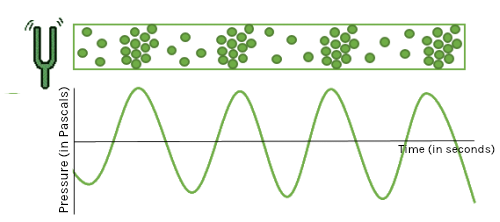
Image B. PRESSURE WAVE WITH GRAPH, author: @zen-art
If we could see zillions of particles of air moving and creating compressions and rarefactions, we would see something like shown in this gif image of a spherical wave below, with denser areas moving from the source.
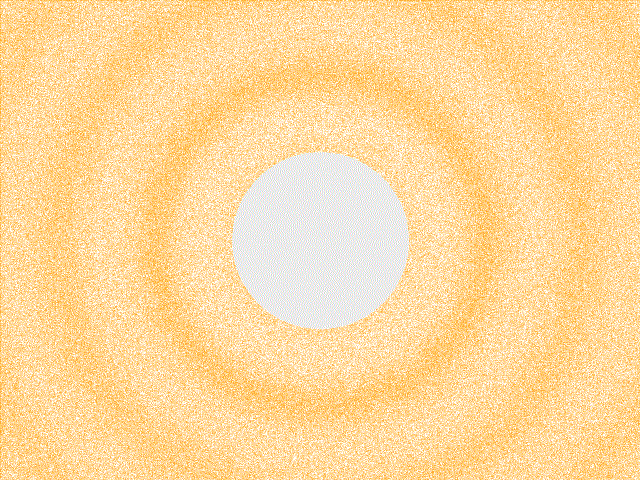
Spherical pressure waves, wikipedia, author: Thierry Dugnolle, Creative Commons CC0


Now that we have defined a sound wave as longitudinal, pressure, and a mechanical wave, let's investigate it further. When we were talking about waves in general, we mentioned period, frequency, amplitude and speed of propagation. As any other wave, a sound wave has them too.
The frequency of a wave tells us how often the particles of the medium vibrate when the wave passes through the medium. It is a number of complete back-and-forth vibrations of a particle of the medium per unit of time and it is measured in Hertz.
Every particle of the medium
vibrates at the same frequency.
The period of a wave is the time for a particle on a medium to make one complete vibrational cycle and in sound waves, we can see that period as the time between successive high-pressure points or the time between successive low-pressure points. Since period and frequency are reciprocal, a sound wave with a high frequency has a small period and the wave with low frequency has a big period as seen in the picture on the right.
Human ear is capable of detecting sound waves ranging from approximately 20 Hz to 20 000 Hz. We call the sound below that range infrasound and that which is above the range ultrasound. We know that many animals have much better hearing than us humans. Dogs hear frequencies up to 45000 Hz, bats as high as 120000 Hz, and dolphins up to 200000 Hz but surprisingly enough, elephants can hear frequencies as low as 5 Hz.
What people refer to as pitch in the musical industry is the sensation of frequency. High frequency has a high pitch and a low frequency has a low pitch. There are intervals in music regarding the frequency ratio. Two sounds whose frequencies make a 2:1 ratio are said to be separated by an octave, 5:4 ratio is a third, 4:3 is a fourth and 3:2 is fifth. When we talk about musical notes, each and every note has a unique frequency, we will get to that a bit later.
REMEMBER:
Every musical note has a unique frequency.
Just like any note has a unique frequency, any object has a natural frequency at which it can vibrate. Musicians use instruments that have the ability to vibrate with sets of certain frequencies which are musically sounding and appealing. You can find a natural frequency of a glass by gently sliding your finger over the rim of it. You will hear the frequency because of the slip-stick friction. You will actually make a glass vibrate because your finger will pull the molecules from the surface, slip and then stick them at another location.


There is a big difference between the intensity of a sound and its decibels. It is the same difference as that between distance and meters. One is used to measure the other.
The scale for measuring intensity is the decibel scale.
To understand the intensity of a sound wave, we have to start with the amplitude. Why amplitude? Imagine plucking a guitar string just a little and imagine plucking it with more energy giving it larger amplitude with the longer stretch before you let it go. The vibration with a higher amplitude will impart more energy to the medium and the air particles will be displaced to a greater distance. That distance is very important for the intensity for intensity depends on it.
INTENSITY = ENERGY / (TIME * AREA)
Intensity is the amount of energy that is transported past a given area of the medium per unit of time and we measure it in Watts/meter2. The intensity decreases with increasing distance from the source. Depending on where you are standing and how good your hearing is, you will say that a guitar is quiet, loud or too loud to your liking. The loudness of a sound is very subjective and your health and age have a great impact on your ability to hear and recognize different frequencies and decibel levels.
Threshold of hearing (TOH) is the faintest sound a human ear can detect.
The threshold of hearing is the sound with the intensity of 1*10^-12 W/m2 or 0 decibels. The decibel scale is a logarithmic scale (based on powers of 10) with which we represent the sound power level.

Image D. SOUND POWER LEVEL, author: @zen-art
Keep in mind that frequency and loudness are two different things. You can read all about different frequencies and how we hear them in my post DOPPLER EFFECT.


Ok, we have said that the frequency is the number of vibrations that an individual particle makes per unit of time, since that has nothing to do with distance, it has nothing to do with speed either since speed is always distance traveled per unit of time. Obviously, the faster a sound wave travels, the more distance it covers.
The speed of a wave
is the distance that a point on a wave travels per unit of time.
The speed of any wave, including the speed wave too, depends on the properties of the medium. The speed of sound is faster in solid materials and slower in liquids or gases. This is because of their density and elastic properties. Remember when we said that sound is traveling because of particle-to-particle interactions? Do you remember what kind of particle interactions are in solids and what kind in liquids and gases? Solids have the strongest interactions between particles, followed by liquids and then followed by gases. This property of the medium is called the elastic property and it is one of the things that impact the speed of sound. Elastic properties are different for different materials even if they are of the same type because they depend on the material.
Elastic properties of a material determine
its ability to maintain its shape and not deform when a force is applied to it.
Density is another thing that plays a big role here. If a medium is denser, the sound will travel at a faster rate. Elastic properties have a larger effect than the density so if the sound is traveling through two mediums that have the same density, it will go slower in that one with the smaller density.
Take a look at that table above one more time. Do you see something interesting in it? I just told you earlier that sound travels faster in denser materials. The cooler air at 20°C is denser than the one at 40°C and yet, the sound travels faster at 40°C. Can you guess why that is? It is because an increase in temperature in gases causes the molecules to move faster and this accounts for the increase in the speed of sound. This influence of elasticity and density on the speed of sound is usually shown by the Newton–Laplace equation that states how the speed of sound is proportional to the square root of the ratio of the bulk modulus of the medium to its density.

Image E, The Newton–Laplace equation, author: @zen-art
But hey, all this time I am talking about material and still did not mention frequency and amplitude and I know that you know how those two have something to do with speed since I told you so in my previous posts. Fine, stop being so impatient, I am getting to it. Here you go:
v = f * λ
Are you happy now? Yes, like with any other wave, the speed of the sound wave is also mathematically related to the frequency and the wavelength of the wave (there is a big BUT coming), BUT... Be careful not to think how those two things are creating the speed or that the speed is dependent on them, it is not. An alteration in wavelength will cause an alteration in frequency and vice versa but it will not affect the speed of the wave.
Speed of the wave depends on the properties of the medium.
It changes only if the properties of the medium change.


I have already written something about standing waves in my post CALCULATE THE SPEED OF LIGHT USING CHOCOLATE and I think I have mentioned them when I was talking about waves in general, but let's review what we know...
Standing wave is formed when an object is forced into resonance vibrations at one of its natural frequencies. It is the vibrational pattern created within a medium when the vibrational frequency of a source causes reflected waves from one end of that medium to interfere with incident waves from the source. Specific points along the medium are standing still while other points vibrate up and down. We call the frequencies at which this happens, harmonics.

Harmonic partials on strings, author: Qef, public domain

Until next time,


- line divider that I use is from FREE CLIPART LIBRARY, and is here



@steemitbloggers

Harmonic partials on strings, author: Qef, public domain
As you can see in the picture above, a standing wave pattern has points that are standing still and points that are moving (crests and troughs). Points that are standing still are NODES and those that move are ANTINODES. Harmonics are the reason why we love music so much and what we call the first harmonic is actually the fundamental frequency or the lowest frequency produced by a particular instrument.
To create other harmonics, we have to add nodes and the more nodes and antinodes we have, the higher the harmonic we get. We can easily see that the length of the wave is related to the length of the string. For the first harmonic, there is only one-half of a wave within the length of the string or to put it in other words, the length of a wave is twice the length of the string. For the second harmonic, the length of the string is equal to the length of the wave and so on.


Yes, yes it can. The reason why this is possible is because of the resonance. Resonance is a phenomenon in which an external force affects a system to oscillate with greater amplitude at specific frequencies. Due to the storage of vibrational energy, small periodic driving forces have the ability to produce large amplitude oscillations. This is not an easy thing to do. You will need to know everything we have covered so far about the sound so think about this as a review of everything we have learned in this post.
Natural, or resonant frequency is the frequency at which atoms of a particular material vibrate. A singer can produce the same natural frequency with her voice and cause a material to vibrate because the singer's voice displaces nearby air particles which crash into the glass and affect it. The first condition is singing the note that has a frequency the same as that of the glass (around 556 hertz).
The second condition is intensity. The singer must produce the sound of around 105 decibels.
The third and the final condition is the selection of the glass itself. A wine glass that stands on a stem is good because the amount of damping is smaller. The glass should be empty and it helps if it already has a few flaws in its structure or cracks that will serve as weak spots and, of course, the thinner the glass, the better.
There are few opera singers in the world who can perform this without electronic amplification, I have seen several of them in videos an must say that I am pretty much amazed with their vocal abilities.
Keep in mind that resonant frequency is the basis of ultrasonic testing and the resonance is the cause of sound production in musical instruments so glass shattering with your voice is not that important really. :) If you had trouble following this post, I suggest that you read my two preceding posts about vibration and the nature of waves, they can easily be considered the introduction to this one.
If you are interested in learning more about sound, check out these references:
The nature of sound from physics.info
Sound waves and music from physicsclassroom.com
Resonance from wikipedia.org
Shattering a wine glass with sound from stanford.edu
The speed of sound in other materials from nde-ed.org
Can you really shatter a glass with a high note? from howstuffworks.com
Until next time,
KEEP YOUR SMILE ON,
& RESPECT YOUR INNER GENIOUS!

If you are interested in something physics (or science in general) related, tell me and I would be happy to make a post about it and explain it. Promoting science and making it understandable gives me great joy, I would be happy to help you.

Image sources AND LICENCES in order of appearance:
- line divider that I use is from FREE CLIPART LIBRARY, and is here
- titles are made by me using a clipart from pngtree.com that is free for commercial use, you can find it here
- images A,B,C,D,E, and tables 1 and 2 are made by me and you have my permision to use then anywhere in any way you like without giving me any credit
- my bitmoji avatar was created on https://www.bitmoji.com/, visit the site to create yourown
All images used in this post are free for commercial use, if you have a reason to believe otherwise please contact me with the proof and I will make the proper corections. Thank you.
PROUD MEMBER OF:



@steemitbloggers



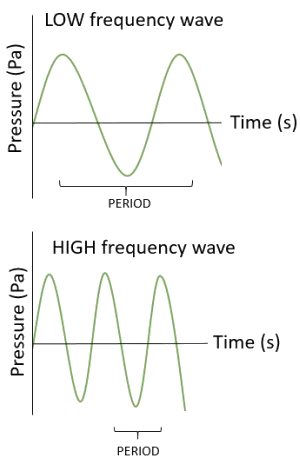


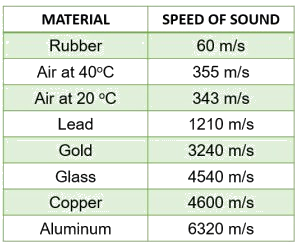
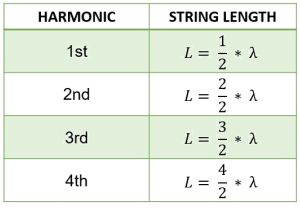

Like you, I am musically inept except for my hearing. I tried music as a youth and realized that the amount of work I would have to do to become just competent was staggering. I put the work into baseball instead :)
I first became REALLY interested in the speed of sound, and particularly the speed of sound on the Bonneville Salt Flats. There were several near misses in my youth, and I had to figure out what the big deal was. By the time Craig Breedlove accomplished the deal I had at least some understanding of the physics.
And for the record: Probably my favorite unsuccessful attempt was by Tommy Ivo. He put four Oldsmobile engines in a car. Two pair that were connected at the crank and the pairs pushed through a drive that ended up in one driveshaft. Harmonic imbalance ultimately sunk that project but I had a whole new series of waves to check out....
Thanks Petra. Your explanation is once again flawless. What a great series, and I hardly have the words to thank you for it!
I think you are one of the biggest fans of this series :) I am very glad you like it and your love and support are very much appreciated! 💚
Congratulations! This post has been upvoted from the communal account, @minnowsupport, by zen-art 💚 from the Minnow Support Project. It's a witness project run by aggroed, ausbitbank, teamsteem, someguy123, neoxian, followbtcnews, and netuoso. The goal is to help Steemit grow by supporting Minnows. Please find us at the Peace, Abundance, and Liberty Network (PALnet) Discord Channel. It's a completely public and open space to all members of the Steemit community who voluntarily choose to be there.
If you would like to delegate to the Minnow Support Project you can do so by clicking on the following links: 50SP, 100SP, 250SP, 500SP, 1000SP, 5000SP.
Be sure to leave at least 50SP undelegated on your account.
I love your posts like these os informative and interesting
Thank you, that is really nice, I am glad you enjoy them 💚
Wow great post! And a big one!! :D haha Great to learn few more new things! Nature is just nature :D Amazing as it is!
Have a great day kraaafna!
It did take me some time for this one but I am satisfied with the final result. Thank you for your lovely comment, you have a nice day too science dude 💚
Haha like you i am also big fan of music, but don't able to produce better sound.
Moreover the article is great, you have explained everything clearly.
Thank you for your support, it is very much appreciated. I am happy to know that I managed to explain it clearly 💚
Another great post. And thanks to sound I can create
When little i tried to break a glass yelling. Did not work for me and went voiceless lol haha
Save your voice, this is really tricky to do :)
This post has been voted on by the steemstem curation team and voting trail.
There is more to SteemSTEM than just writing posts, check here for some more tips on being a community member. You can also join our discord here to get to know the rest of the community!
Hi @zen-art!
Your post was upvoted by utopian.io in cooperation with steemstem - supporting knowledge, innovation and technological advancement on the Steem Blockchain.
Contribute to Open Source with utopian.io
Learn how to contribute on our website and join the new open source economy.
Want to chat? Join the Utopian Community on Discord https://discord.gg/h52nFrV
Thank you 💚💚💚
Congratulations! This post has been chosen as one of the daily Whistle Stops for The STEEM Engine!
You can see your post's place along the track here: The Daily Whistle Stops, Issue 233 (8/21/18)
The STEEM Engine is an initiative dedicated to promoting meaningful engagement across Steemit. Find out more about us and join us today.
Thank you 💚💚💚
This post was upvoted and resteemed by @thethreehugs. Thank you for your support of @thealliance.